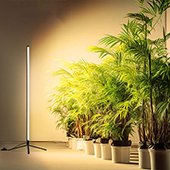Menu
LOCATIONS
Menu
Vanten LED
Guzhen, Zhongshan, Guangdong, China
WhatsApp: +86 180 2409 6862
Email: info @ vantenled.com
WHAT WE DO
Menu
RESOURCES
Menu
Vanten LED
We are a professional LED plant light manufacturer, committed to using technology to enhance the maximum potential of the lamp, continuously maximizing the benefits for growers, and saving energy for the planet.




